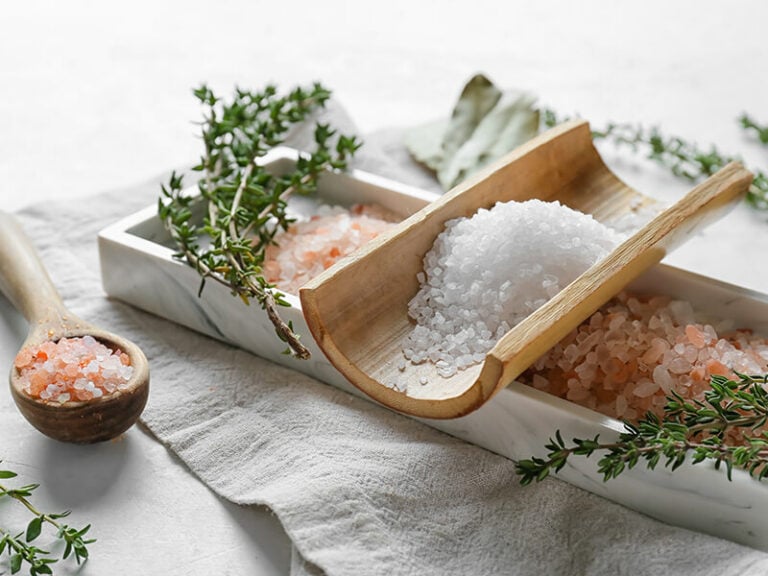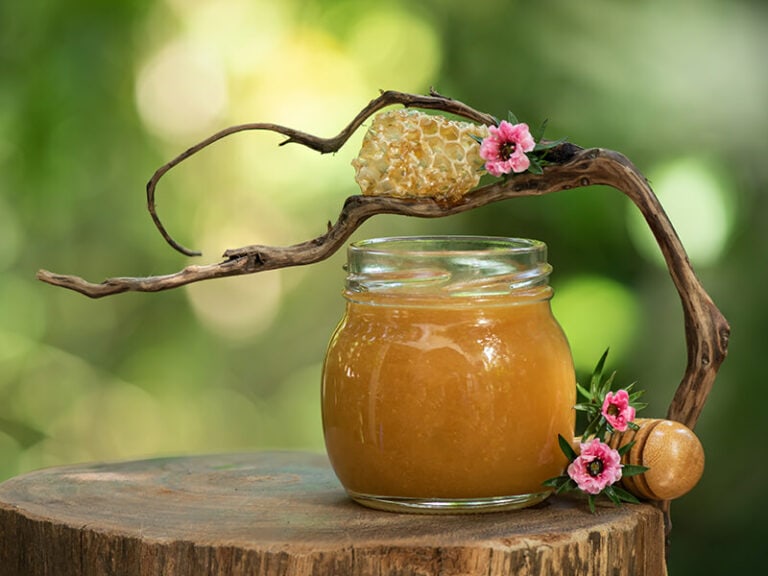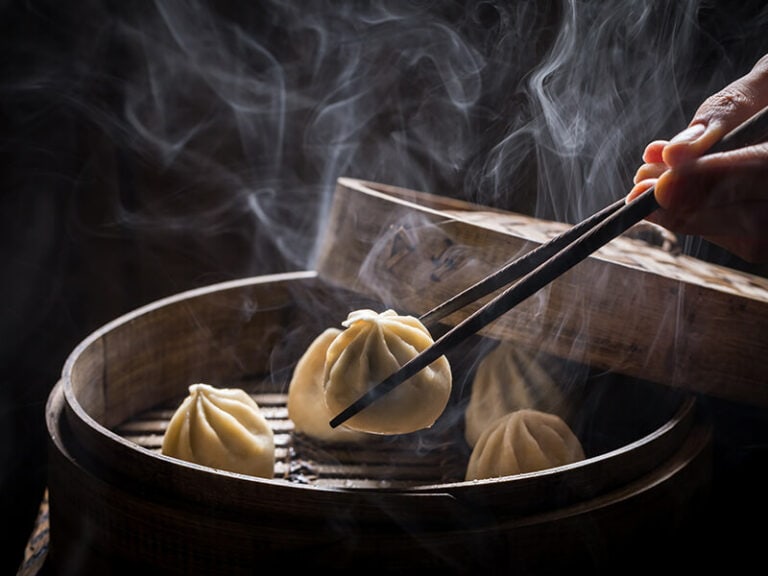What is miso? Even if you are a food connoisseur, it’ll take some time to come up with a proper answer to this question. When it comes to Japanese food, you’ll immediately think of nutritious, fresh, and mouth-watering ingredients, and miso is one of those.
You can add miso to various healthy and tasty foods, so knowing common knowledge about this Japanese delicacy is essential. This article will give you the key to unlocking the door to the world of miso and more. Keep scrolling down to learn more!
What Is Miso?
As mentioned before, miso is a signature dish of Japanese food culture. When combined with other foods, this specialty helps enhance the food’s flavor. Here is some common knowledge about it.
Definition
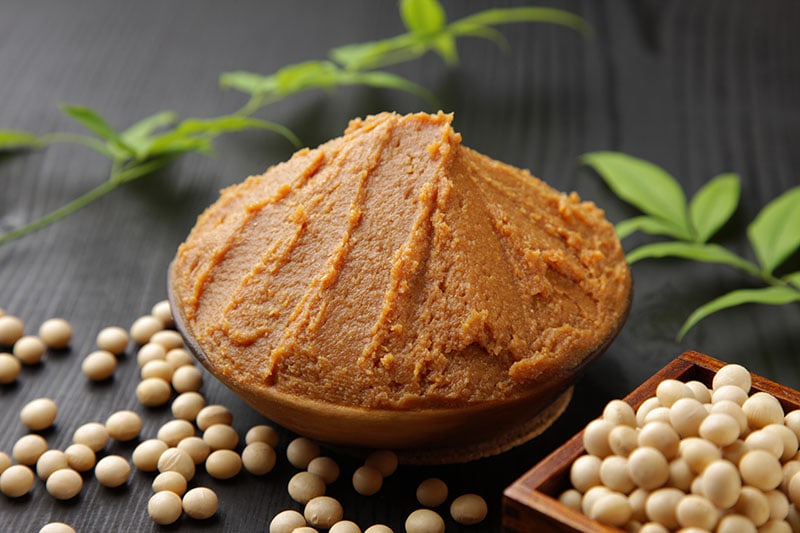
Miso is one of the most familiar Japanese condiments. The Japanese make miso mainly from soybeans, rice, and barley and ferment this mixture with salt and koji, a mold-inoculated grain.
The final fermented product is a thick paste, and people use it in many cooking methods. For instance, you can use miso to salt vegetables or meat, make soy sauce, soups, and so on.
Thanks to its tremendous benefits, most people use miso in a wide range of traditional and modern cooking throughout Japan, and it is gradually conquering global cuisine.
This tasty soybean paste is rich in protein, vitamins, and essential nutrients. Therefore, miso plays a crucial role in improving people’s health.
Origin
Although miso is a traditional Japanese specialty, the truth is that it originated in China. Buddhist monks first presented this incredible soybean paste around 1300 years ago.
In the past, people usually used fermented combinations of soybeans, grains, and salt to preserve food. Moreover, people considered miso a luxury treat, and only the aristocracy could enjoy it. In addition, the color of miso was also based on class levels.
The nobles and samurai ate miso made from costly white rice. Conversely, low-class individuals or peasants cannot use this expensive rice to make their miso. Hence, they used barley, millet, or broken rice to make dark-colored miso.
Only after the Edo period (1603-1868) did the use of miso spread among Japanese people, and now becoming a goody of many people worldwide. (1)
You can gain more helpful knowledge about miso.
What Does Miso Taste Like?
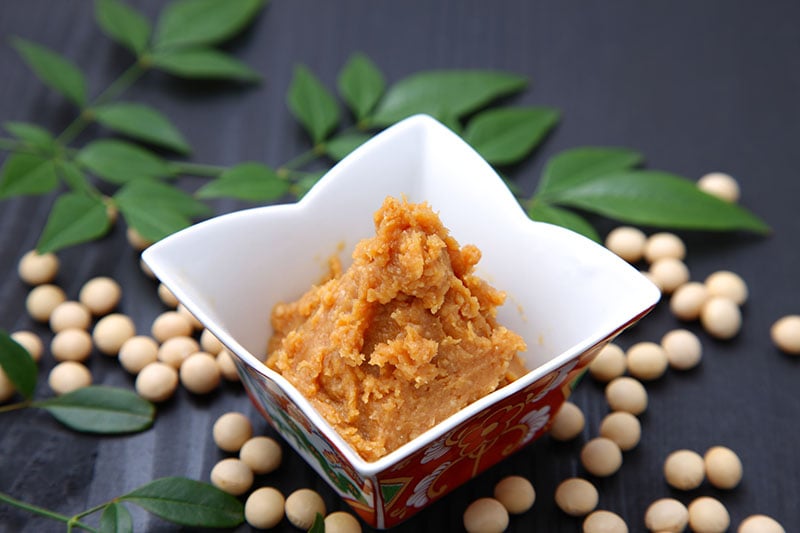
Describing miso flavor is a tricky business since every region has its own way of creating miso with a specific taste. Let’s talk about miso texture. Miso is smooth, like the texture of peanut butter.
Primarily, miso contains two flavors: salty and umami. Moreover, it is tangy, like other fermented products. Likewise, this paste has an aroma like the smell of toast and a profoundly salty taste. Lighter miso tends to be sweeter, and some varieties are chunky.
Furthermore, umami plays a key role in adding a savory flavor to your dishes. Umami is known as people’s fifth taste sensation. Its taste makes foods complex, satisfying, and extremely savory. This is why people usually mix miso with other foods to enhance the foods’ flavor.
Health Benefits Of Miso
Miso has become a popular ingredient globally because of its enormous health benefits. Specifically, beneficial bacteria, such as probiotics, can increase thanks to the fermentation process quickly.
These bacteria work well in improving the function of your digestive system and the balance of gut microbes. Furthermore, miso also contains a rich source of antioxidants. Therefore, it assists in lowering the risk of breast, stomach, lung, and colon cancer.
When consuming miso paste, you will have a chance to promote your brain health by reducing stress, anxiety, depression, etc. (2)
Common Types Of Miso
Determining the proper types of miso will help you pick the suitable one for your tastes and preference. There are various types of miso spread throughout Japan. Miso can vary depending on the ingredients used, the fermentation time, and the ratio of other elements.
Interestingly, even with the same ingredients, different regions make different flavored miso types. Nonetheless, you can distinguish miso based on the following characteristics.
Different Types Of Miso By Ingredient
Every miso maker can adjust the ingredients to make their miso stand out. Therefore, choosing the suitable one may depend on your palate and different recipes. Here are amazing kinds of miso categorized by ingredients.
Kome Miso (Or Rice Miso)
People make this great miso from a mixture of soybeans, salt, white rice, and rice koji. Moreover, rice miso accounts for roughly 80% of the miso distributed in Japan. (3) This variety is widespread in the eastern region of Japan, such as Hokuriku and the Kinki region.
This miso has no pungent smell and a yellowish, red, etc. color. People usually make whitish miso from boiled soybeans and reddish miso from steamed miso.
You can combine rice miso with many foods, such as making miso soup, stewing, or marinating fish and meat. Kome miso usually experiences a six-month or one-year fermentation process. After fermented, the result tends to have excellent umami and mellow sweetness.
Mugi Miso (Or Barley Miso)
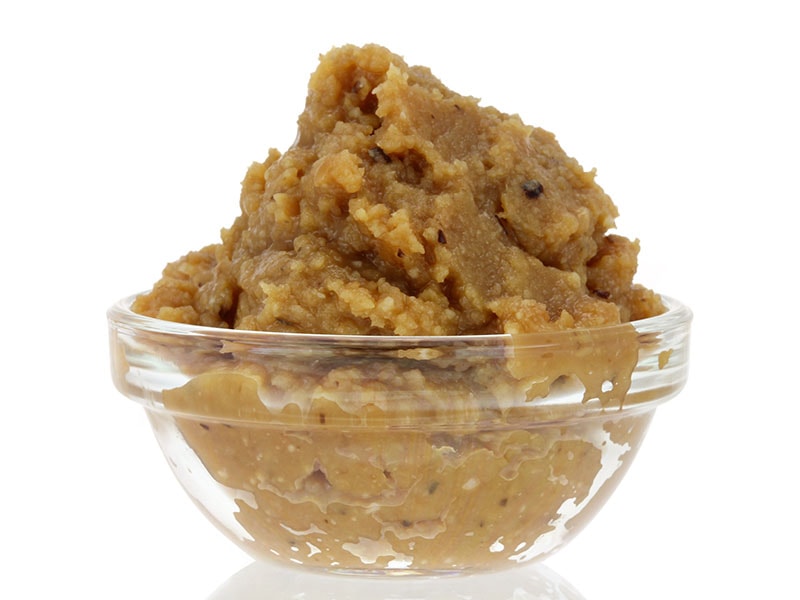
Migu miso is a traditional miso variety made from soybeans, barley, salt, and barley koji. This miso is usually produced in Kyushu, Shikoku, and the western Chugoku regions.
Moreover, people tend to grow barley instead of rice in these places because the terrain and climate are unsuitable.
This variety has a more extended fermentation period of roughly one to three years. Its taste is mild and slightly sweet. Therefore, it is suitable for vegetable dips with its unique sweetness and barley aroma.
Additionally, these bold, deep earthy miso colors range from reddish-brown to dark brown, depending on the fermentation process.
Mame Miso (Or Soybean Miso)
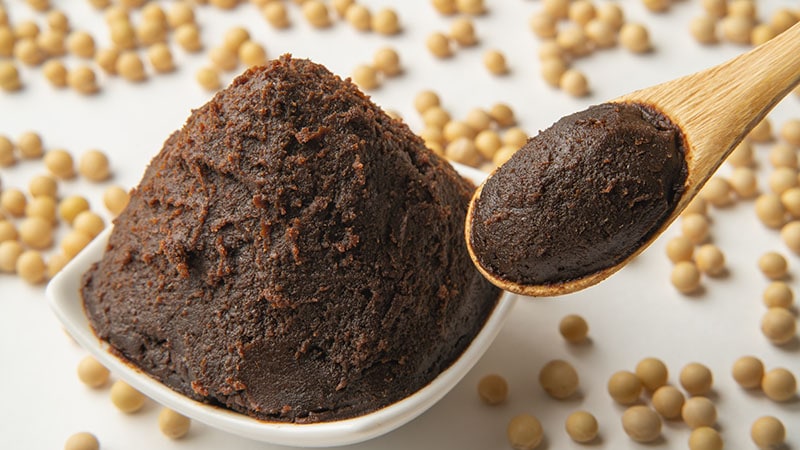
Why do people call this variety soybean miso while soya bean is also the main ingredient of others? The reason is that miso makers ferment a mixture that includes mainly soybeans and only small quantities of grains.
This miso has a darker and reddish brown color than kome miso. It also has a strong and salty flavor and chunky texture. Though soybean miso is not sweeter than others, it possesses some bitterness and incredible umami.
You can diminish its saltiness by diluting it in marinades or mixing it with other types of miso. Regarding its fermentation period, it takes two to three years. Aichi prefecture is the major miso consumption in Japan.
If you are confused about choosing a suitable type of miso, you can follow some helpful tips.
Different Types Of Miso By Color
The different colors of various miso are based on the length of fermentation, the flavor, and the ratio of ingredients. You can find four common types of miso in many parts of the world.
White Miso (Or Shiro Miso)
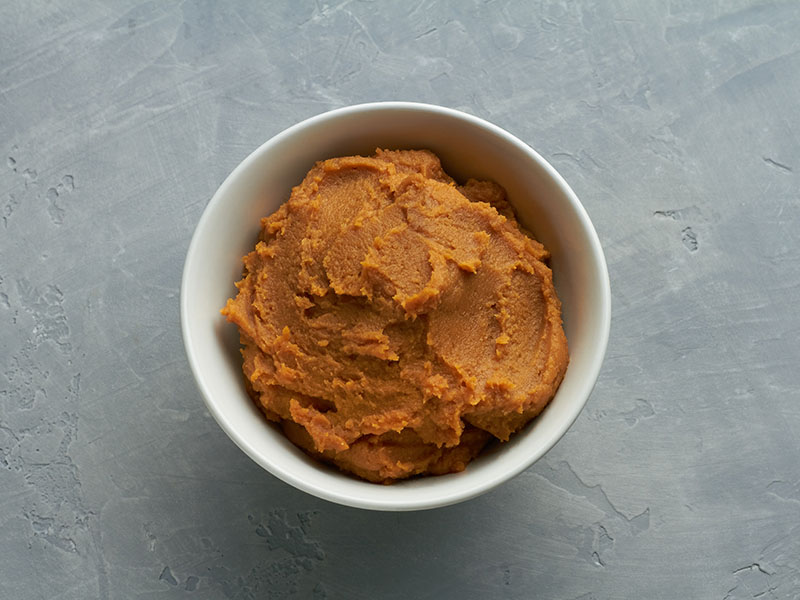
Shiro miso is an ivory to light yellow variety. You’ll find rice (or barley), a little salt, and a small number of soybeans in this miso.
Due to its short ferment time of roughly three months, the resulting tends to be lighter, nuttier, and sweeter than red and yellow miso.
You can use this mild miso to prepare dishes such as miso soup, stew, sauce, dressing, and marinades. White miso is the most accessible type of miso to eat and use.
Yellow Miso (Or Shinshu Miso)
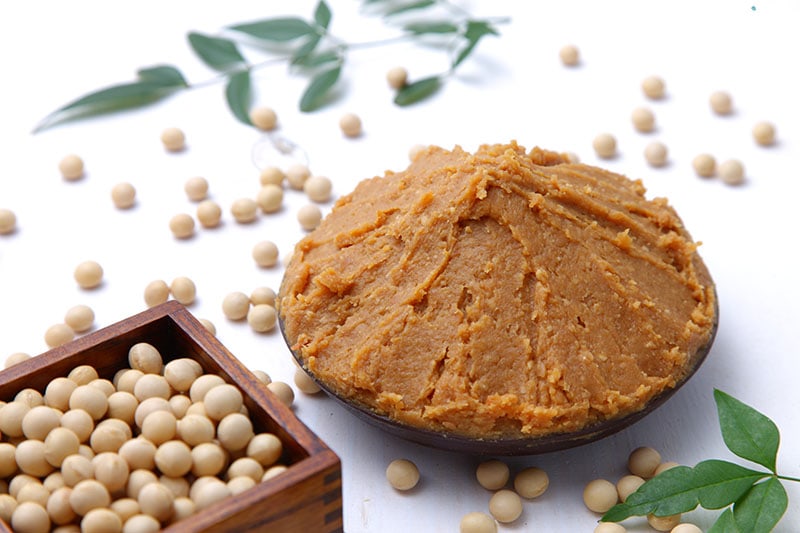
Shinshu miso has a yellow to light brown or dark brown color. It’s made from various ingredients, including soybeans, rice, and wheat.
The length of fermentation of this miso is at least twelve months. Therefore, it is saltier than white miso but less salty than the red variety.
Yellow also has a faint aroma and a mellow acidic taste. Hence, shinshu miso does well in soups, marinades, and vegetable dishes.
Red Miso (Or Aka Miso)
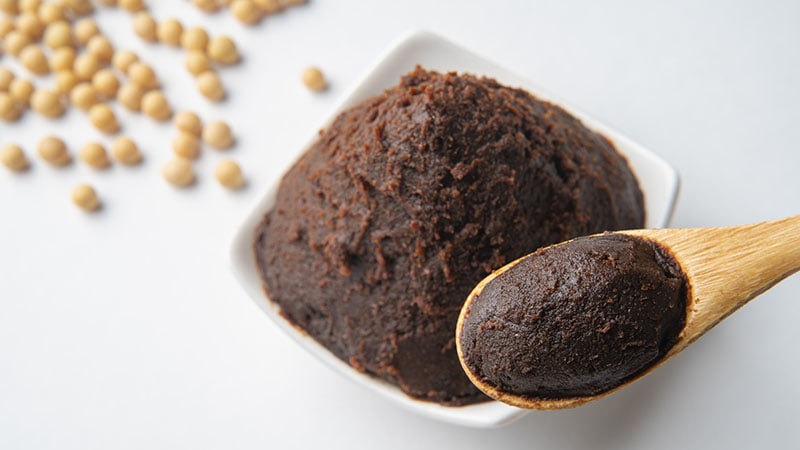
People usually make red miso with white rice, salt, koji culture, and a large number of soybeans. Then, they ferment it for one to three years. Thus, red miso has a deep amber to chestnut color.
This variety is saltier, tangier, and has higher protein levels than others. Due to its bold flavor, red miso can overwhelm other ingredients in the food. It would be better to use this tasty miso in heartier dishes like stews, marinades or glazes, and rich soups.
Mixed Miso (Or Awase Miso)
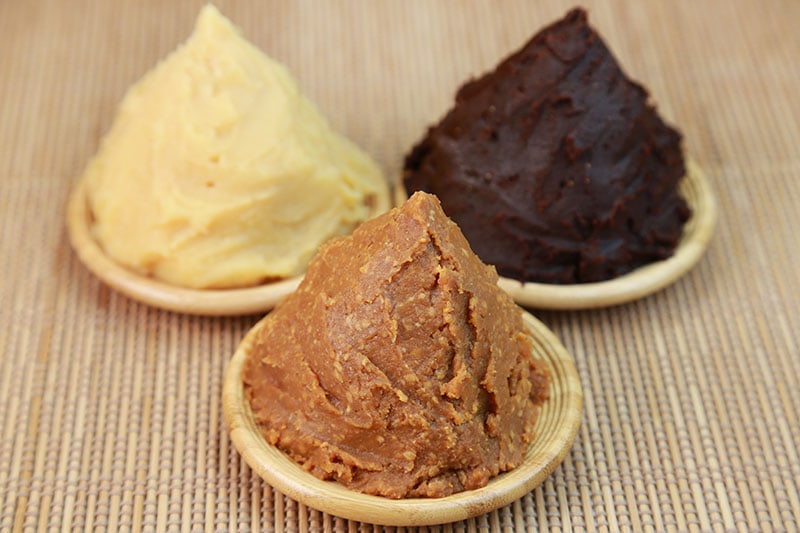
That’s true to its name. Mixed miso is an excellent combination of white’s mild flavor and red’s strong taste. Consequently, awase miso has a delicate and rich taste.
Due to its versatility and popularity, people usually use this fantastic miso in various foods. You can adjust the taste to suit your preferences.
You can learn more about three popular misos and their uses in amazing recipes.
How To Store Miso Correctly
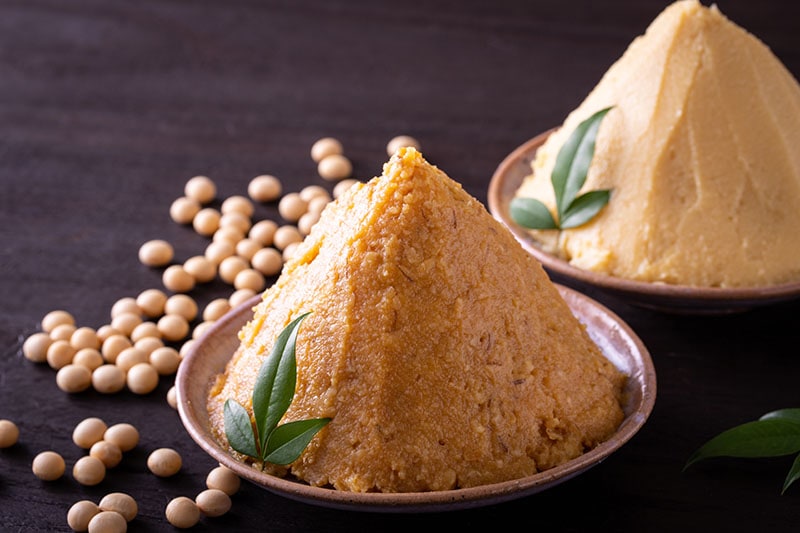
Although miso paste is not a perishable food, it will still go bad over time if you don’t store it properly. Here are some tips to keep this tasty paste correctly and prolong its shelf life.
Regarding unopened miso containers, you should put them in the fridge or place them in a dry, cool, and dark place. Keep these containers away from direct heat if you put them outside.
Moreover, the best way is to keep an eye on the instructions on the product label in advance and follow the manufacturers’ guidance.
Concerning the storage of opened jars of miso, it is essential to preserve them in the fridge. It would help if you sealed these miso jars tightly to prevent the growth of harmful bacteria.
Moreover, miso oxidizes over time; before storing it in airtight containers, you should cover your miso in plastic wrap. Doing this can shield your miso from discoloring.
Note: Ensure the kitchen tools you use to scoop the miso paste out are clean and dry to prevent contamination and quality degradation.
How To Tell If Miso Has Gone Bad
Knowing the signs of rancid miso is the first important step to guaranteeing food safety. You cannot find these signs with a mere glance. Before using it, you need to check these red flags below to tell if your miso goes rancid.
Texture
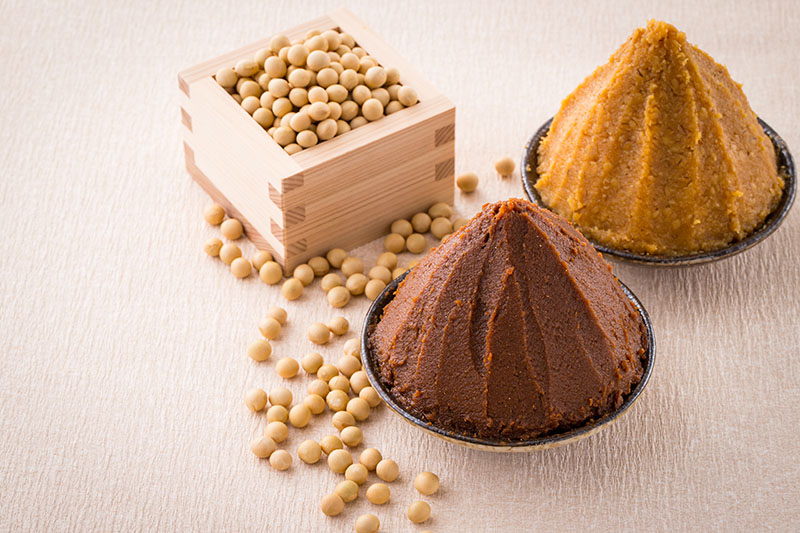
One of the most visible signs to determine bad miso is its texture. Once miso paste is rotten, it is no longer creamy and smooth and doesn’t have a paste-like consistency. Moreover, when your miso begins to have a slimy or crusty texture, you should eliminate it.
Color
If you need help determining whether your miso paste is bad due to its texture, you can take a look at its color. Miso can turn darker over the period, but it is not exactly a sign of being spoiled.
Once your miso has a weird color different from all types of miso and some molds, it’s time you get rid of it. The appearance of molds indicates the rapid growth of harmful bacteria, which can wreak havoc on human health.
Smell
You can tell whether your miso paste is rancid depending on its smell. Once your miso has an unpleasant or off scent, it may be unsafe to consume.
Note: You should combine the three red flags above and the best-by-date label on the packaging to determine whether your miso is inedible.
Fabulous Recipes With Miso
There are numerous marvelous recipes with miso paste. You can learn to serve your loved ones with the top three easy-to-cook and delicious recipes in this part.
Miso Salmon
If you want to combine buttery and mild salmon with savory and sweet miso, you cannot miss out on this recipe. You can serve this delicious dish with rice as a main course for your family. I’m sure they will appreciate that.
Making miso salmon is not a big challenge, even if you are new to the kitchen.
Miso Soup
I can immediately think of miso soup when it comes to signature Japanese dishes with miso. Imagine it is cold out there; you sit inside your home and enjoy this warm soup. What a cozy meal!
Spicy Miso Pasta
This recipe is a fantastic combination of Italian and Asian food. It’ll satisfy you with the explosion of various flavors: meaty and slightly woodsy mushrooms, pungent and mildly sweet miso, and slightly spicy garlic.
FAQs
Are you satisfied with the information in this article? This part will provide you with some answers to the common questions people frequently ask about this marvelous miso paste.
It’s Time To Add Miso To Your Go-To List
Has this article covered everything you want to know about miso? I hope you will have a chance to try this tasty, nutritious, and amazing food.
Miso is no longer an expensive delicacy, and you can easily find it in many places around the world. What about buying and giving it as a present for your beloved ones? They will be on cloud nine if you give them such an excellent goody.
If you find this article interesting and helpful, don’t hesitate to leave your view in the comment section, like, and share this post with everyone you know.
References
- Miso (2022) Wikipedia. Wikimedia Foundation.
- Petre, A. (2017) Why miso is incredibly healthy, Healthline. Healthline Media.
- Miso / soy sauce: Highlighted Japanese ingredients – Japanese agriculture, forestry, Fisheries and Food – Japan External Trade Organization (no date) ジェトロ.




